


The Bio-Heat technology is an advancement and disruption in the industry to extend the resorption properties of PRF from 2-3 weeks to 4-6 months. This new development and protocol involves an additional heating process following centrifugation where the platelet poor plasma (PPP) layer is heated at specific temperatures to denature and reorganize albumin. This drastically extends the working resorption properties of PRF. The Bio-Heat technology has been extensively utilized in various fields of medicine and dentistry, including facial aesthetics.
By heating and denaturing albumin, a modification in the secondary structure after heating transforms liquid PRF into a tridimensional structure. The heating process consists of a pronounced modification in the surface structure of albumin within its resorption properties favoring more stability when implanted back into host tissues.
Extend the resorption of PRF from 2-3 weeks to 4-6 months with Bio-Heat.
Use the Bio-Heat heating system as Step 2 after using the Bio-PRF system to significantly extend working properties of platelet rich fibrin.
To utilize this new technology, a specialized heating device (Bio-HEAT, Bio-PRF) is required (Figure 1). The Alb-PRF is produced by collecting peripheral blood collection using 9-10 ml tubes, without adding any additives.
In the first step, peripheral blood is collected and then placed in a horizontal centrifuge (Bio-PRF) at a specialized concentrated-PRF protocol (C-PRF). The C-PRF protocol allows for an upper platelet poor plasma (PPP) layer and a highly concentrated liquid PRF layer wi thin the buffy coat region (Figure 2). After processing, it is possible to observe separation of blood layers into these 3 layers.
Two to four milliliters of the initial portion of the PPP layer are then collected with a syringe (Figure 2), while the other blood portions (buffy coat, liquid PRF, and red blood cells) are placed in the Bio-Cool device.
 Figure 2 : Collect of PPP layers
Figure 2 : Collect of PPP layers
The syringes containing PPP are then inserted into the Bio-Heat heating device. This produces the albumin gel following a 10-minute protocol (Figure 3).
 Figure 3 : Introduction of the PPP
Figure 3 : Introduction of the PPP
Following heating, cool the PPP layer in the Bio-Cool device for roughly 1-2 minutes (Figure 4).
 Figure 4 : Bio-Cool Device
Figure 4 : Bio-Cool Device
The liquid C-PRF layer is then collected into a separate syringe. After the cooling period, the albumin gel is mixed with the concentrated liquid-PRF (C-PRF) layer by utilizing a specialized luer-lock connector and passing the liquids back and forth several times (Figure 5).
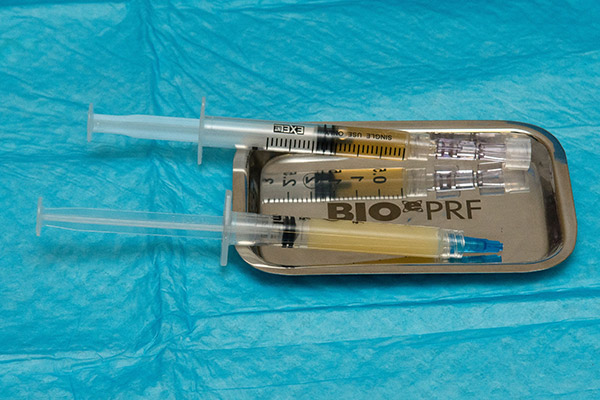 Figure 5A : Note the difference in texture between C-PRF and albumin gel.
Figure 5A : Note the difference in texture between C-PRF and albumin gel.
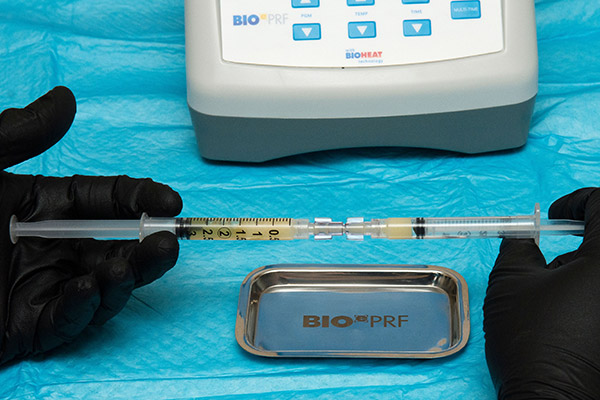 Figure 5B : Mixing of the albumin gel with the liquid-C PRF. As an injectable Bio-Filler, a 25G needle is recommended (under local anesthesia).
Figure 5B : Mixing of the albumin gel with the liquid-C PRF. As an injectable Bio-Filler, a 25G needle is recommended (under local anesthesia).
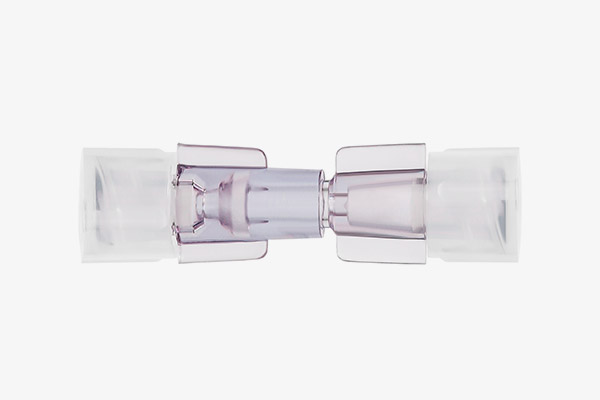 Figure 5C : Connection of the female-female luer lock connector to start the e-PRF production.
Figure 5C : Connection of the female-female luer lock connector to start the e-PRF production.
The Alb-PRF can also be utilized to fabricate custom grafts utilizing a specialized designed tray to make a Bio-Graft for root coverage procedures of gingival recessions.
It may also be utilized to create a custom Bio-Heat membrane with incorporation of an outer ‘sticky bone’ layer. This creates Bio-Bone which includes an outer ‘barrier’ like membrane with a 4-6 month resorption property and an internal particulate bone layer all interconnected with living autologous cells and growth factors!
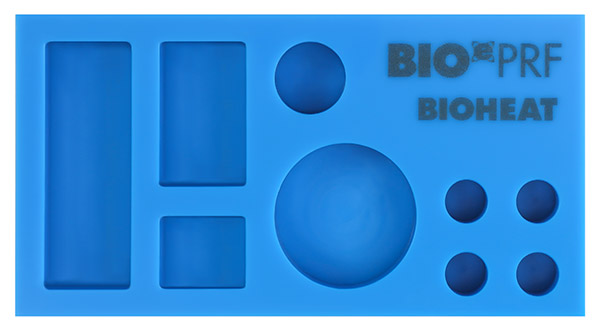
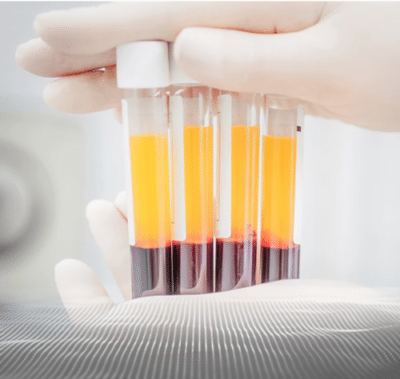

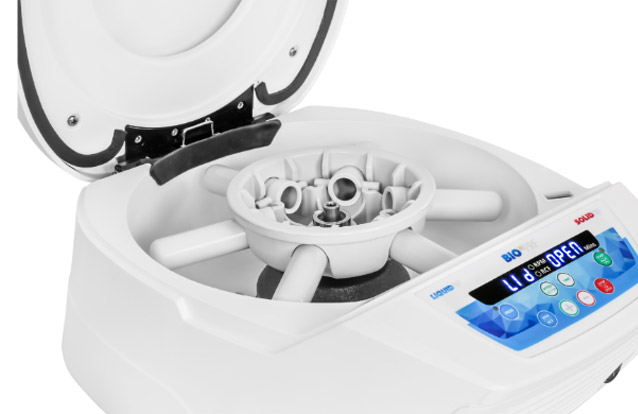
The first commercially available horizontal centrifuge specifically-designed for the production of platelet rich fibrin.
Learn More